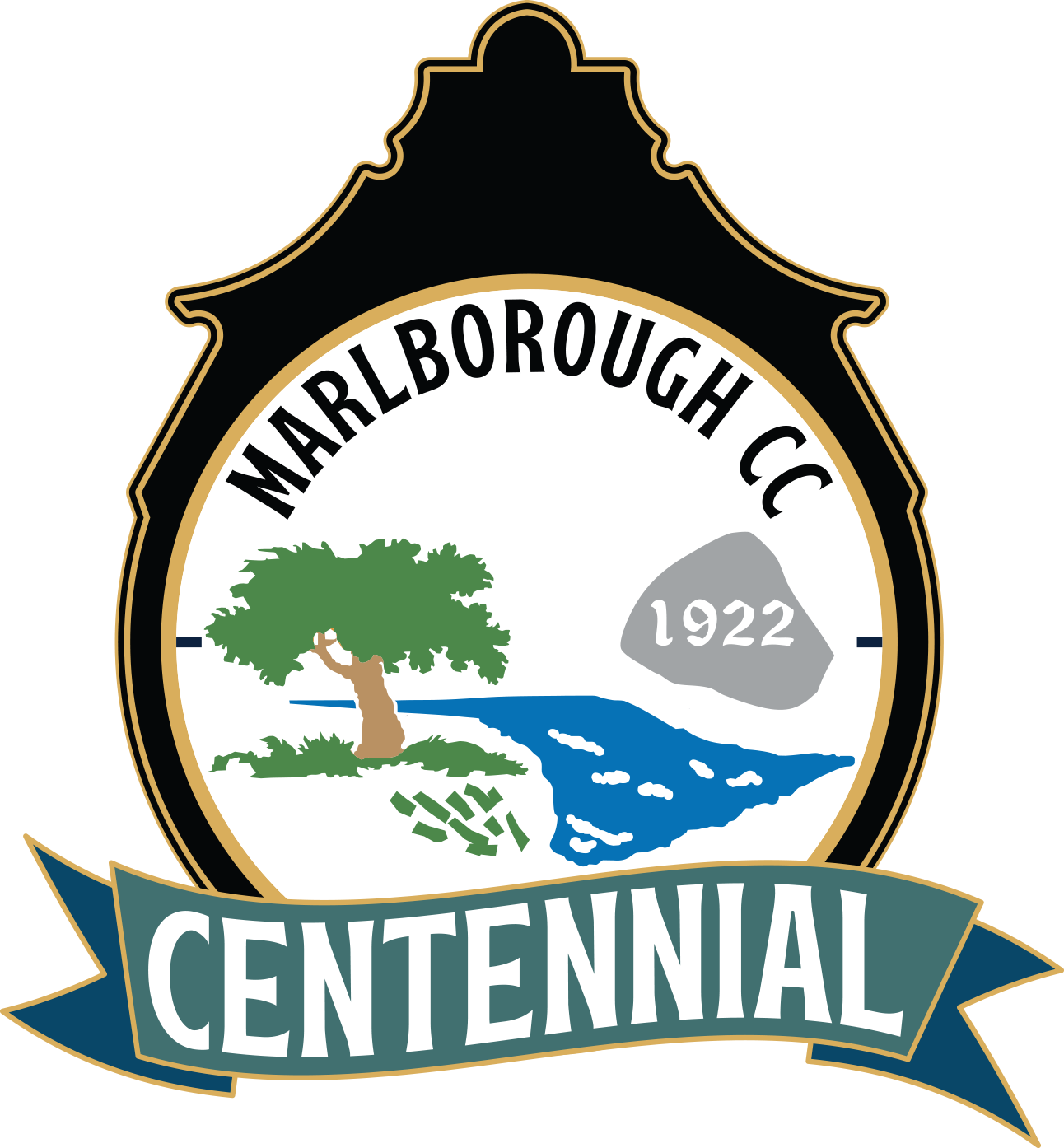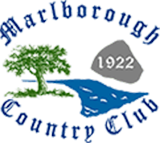
History of Marlborough Country Club
Written by Jack Cutone
The Boston Evening Globe on Saturday May 20, 1922, ran the following announcement on page two under the heading: “MARLBOROUGH”: “The golf course of the Marlborough Country Club will be formally opened Saturday, June 3, 1922. Among those who will be present are Governor Cox, Mayor Curley of Boston, and Mayor Simoneau of Marlborough. One of the feature events will be an 18 hole contest between Ouimet and Guilford.
The Marlborough Daily Enterprise on Monday June 5, 1922 under the heading: “LARGE ATTENDANCE AT COUNTRY CLUB OPENING” wrote “While the heavy downpour of rain during the forenoon Saturday had much to do with keeping many away, the opening of the Marlborough Country Club was a most successful event and despite the threatening weather the attendance was large”.
It was expected that Gov. Channing Cox would be present, but he was unable to attend. Mayor James M. Curley and Mrs. Curley of Boston, and Mayor Edward T. Simoneau and Mrs. Simoneau were among the guests present. There was a large delegation of golf enthusiasts present from Boston as well as from the surrounding towns.
The real attraction for the golf followers was the play over 18 holes. Four-ball best-ball match, which Francis Ouimet with Larry Paton as his partner won from Ed Childs of Lexington and Parker Schofield of Albermarle, Ouimet played a round in 78. Ouimet and Paton won by 2 and 1.
Following the evening on the course, a dinner was served in the Black and White Clubhouse. Vice President of the Marlborough Country Club, John A Curtis was toastmaster. Mayor Curley of Boston and Mayor Simoneau of this city were the principal speakers. Following the dinner many of the guests enjoyed dancing in the spacious hall.
The property over which the nine hole course is laid was purchased by the Black and White Club from the city of Marlborough and included the city “poor farm.” The original clubhouse located on the grounds at the present Marlborough Country Club (MCC) was built in 1770 as the home for Joab Stowe. Old records and memorandum indicated that in 1921, the Black and White Club was formed and occupied the clubhouse (the building was, as now, white with black shutters).
On March 18, 1921 the MCC, Incorporated was organized and approved by the Secretary of State. The property was purchased at public auction in 1921 by Richard G. Verzone, who was rumored to have underworld ties and was associated with the Copley Plaza Hotel in Boston. In May, 1923, a new clubhouse was completed and the old building known as the Black and White Club was operated as a restaurant and it was considered a very popular “speakeasy”. On April 19, 1933 the new clubhouse (current location of the existing Pro Shop) was completely destroyed by fire. The Black & White Club (current restaurant) was partially damaged by fire in 1977.
The Marlborough Room and the upstairs and golfers’ lounges were added at this time. After the sudden and unexpected death of Mr. Verzone in 1933 the club changed ownership several times and experienced financial difficulty. A real estate advertisement from 1948 shows the owner as Harvey M. Clough and listed the property at $75,000 including all furnishings, equipment and 120 members at an individual annual fee of $45.00.
On February 4, 1952, the Marlborough Realty Company (MRC) was organized. The real estate was purchased from the Cloughs, and the MCC, Incorporated, assumed the role of operating management for the MRC. The financing was accomplished through an issue of 300 shares of stock at $100 each. The purchase price was $27,000 for back taxes with the balance being used for working capital. During the early 50’s the membership would perform the general maintenance on the club from painting to planting trees due to the lack of revenue. Today MCC is owned and managed by its’ membership.
The current back nine holes were designed by Wayne E. Stiles in 1921 and completed in 1922. The team of Stiles and Van Kleek designed nearly 100 courses in 14 states along the East Coast, and copied many of the design features of Donald Ross. Over thirty of these courses are located in Massachusetts and New Hampshire and include Woodland, Haverhill, Nashua, Laconia, Marshfield, Duxbury Yacht Club, Taconic Country Clubs, as well as the remodeled Wellesley, Oak Hill, Woods Hole, Thorny Lea, and Pittsfield Country Clubs.
The back nine has received praise from anyone who has had the opportunity to be challenged by the contoured greens and strategically placed hazards. Bob Goalby, in 1981, first winner of the MCC’s senior event, selected the 12th hole as one of his list of the best 18 holes he has ever played. “This is a fun course,” said Billy Casper. “The tricky greens and rolling terrain that gives the golfer many side hill, uphill and downhill lies, are tough to score on.” In 1992 six golf professionals from central Massachusetts were asked to select the most outstanding 18 holes in the region. The professionals were from Worcester, Tatnuck, Greenhill, Pleasant Valley, Holden and Cohassee Country Clubs. They selected 3 holes at MCC: The 12th, 14th, and 16th holes. This is considerable praise when you consider the company our club keeps.
The current front nine was originally planned to be the back nine under the leadership of then Marlborough Realty Board President Paul Markle and MCC President Jack Kelleher, and was designed by Geoffrey Cornish (1914 – ) and William G. Robinson , starting in 1968 and completed in 1970. The course is distinguished by Cornish’s signature of the oak tree in the center of the eighth fairway. The tree was growing on top of a ledge. Geoffrey Cornish felt that its growth would be limited and it would make the hole more interesting. Mr. Cornish is considered a leader in course design in the Northeast for over 30 years. Cornish is also credited with the course designs of Bayberry Hill, Stratton Mountain VT, Captains, Farm Neck, Cranberry Valley, Ocean Edge, and The International Golf Courses.
In 1991, Mr. Cornish revisited MCC to design the additional bunkers (Cornish says, “There is no such thing as a trap!”) on the 7th and 8th holes. During this visit he conveyed some interesting facts about our front nine. The first hole was originally designed to be 330 yards, but was extended to 354 yards. This shortened the second hole from 486 to 441 yards. This hole was intended to be a par 5, but in 1980 was changed to a par 4. Geoffrey Cornish agreed with this modification, and stated a fact all too well known to all of us that “This is now one of the most difficult holes in New England.”
The 7th hole was designed to be 181 yards but was sized down to its current 165 yards. A subcontractor, during the construction of the front nine, holds the distinction of being the first to land in the water hazard to the right of the first fairway. His pickup truck popped out of gear, rolled down the hill, and received more than a one stroke penalty.
The course record of 63 was scored by Don January in the 1983 Senior Tournament, but he did not play the full course. Frank Vana Jr., club champion twelve times, scored a 64 in the Club Championship finals in 1994, but this was not considered official because it was match play. Les Bond, Golf Professional at Wellesley Country Club, and Marty Hunt Jr. both scored a 66.
The official course record is held by Scott Trethewey, previously of Pleasant Valley Country Club, who scored a 65 at the Mass. Open Qualifying on May 30, 1995. Sharing the club record of 65 are Ray Tanner and Ram Encarnacion. Gerry Knipe, past club champion, has the distinction of having been the first member to eagle every hole on the back nine over his more than fifty years as a MCC member. This is quite an accomplishment when you consider that the golf equipment in the past didn’t have today’s technology of perimeter weighted irons, oversized heads, and composite and bubble shafts. Gerry and Eddy Goldberg are also credited with assisting in building the stone walls on the 1st and 10th tees back in the early 1930’s. Fay DeRuvo has won over 25 Women’s Club Championships, having shot 77 at the age of 77 in 2002. Nicholas Leoleis, Club Champion six times, has an eagle on every hole at MCC with the exception of the 2nd, 5th and 9th. Bob Hope visited our course to attend the Joe Lazaro Open for a number of years. His mode of operation was to play nine holes and then to repeat playing the last hole with each foursome. Observers of this tournament reported that Bob spoke with an Italian accent on this day.

